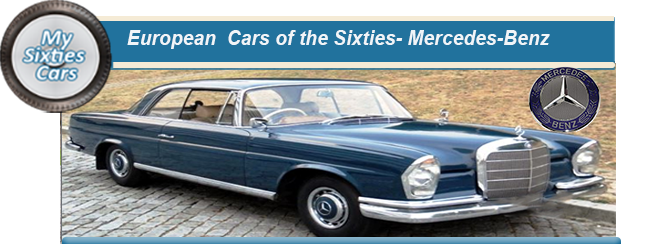
Mercedes-Benz, Germany’s leading producers of premier sedans and sports saloons, have a history going back as far as the automobile industry itself.
The compa ny’s co-founder, Carl Benz, is considered to be the creator of the first-ever petrol-powered car, known as the Benz Patent Motorwagen, with its patent registered in January of 1886.
ny’s co-founder, Carl Benz, is considered to be the creator of the first-ever petrol-powered car, known as the Benz Patent Motorwagen, with its patent registered in January of 1886.
All of the costs of development were met by Benz’s wife and business partner, Bertha, a very wealthy and formidable woman in her right, who also firmly believed that the automobile would play a significant part in the future.
Within less than twelve months the patent for another petrol-driven car was registered, also in Germany.
This time, the patent request came from Mannheim-based Gottlieb Daimler and engineer Wilhelm Maybach, who did not know the fact that Benz had upstaged them by almost a year.
 Such was the dramatic effect of the registration of these patents in Germany, is that in the opinion of most automobile historians, is that they laid the foundation for road travel as it is today.
Such was the dramatic effect of the registration of these patents in Germany, is that in the opinion of most automobile historians, is that they laid the foundation for road travel as it is today.
Unaware of each other’s existence, the two companies were busy manufacturing the world’s motor vehicles were situated within reasonable proximity to each other.
 Benz in Mannheim in the southwest of the country and Daimler in the village of Cannstatt in the outskirts of Stuttgart, a distance of around 135 kilometres, (80 miles).
Benz in Mannheim in the southwest of the country and Daimler in the village of Cannstatt in the outskirts of Stuttgart, a distance of around 135 kilometres, (80 miles).
In the early days, Benz were the first of the two to launch a petrol-driven automobile. Daimler were doing better regarding development and sales, mainly due to the support of a far-seeing Austrian businessman by the name of Emil Jellinek.
Jellinek reportedly had an insatiable curiosity for all the latest developments in vehicular transport. Ever curious, he heard tales of these new horseless carriages being developed by Daimler. So curious that gave little thought in making the formidable 670 kilometres ( 400 miles) journey to Cannstatt to visit the Daimler factory.
 The Viennese financier liked what the company was doing, while, at the same time, striking up a strong rapport with Daimler and Maybach.
The Viennese financier liked what the company was doing, while, at the same time, striking up a strong rapport with Daimler and Maybach.
Before setting off on the long journey home, Jellinek placed an order for his first Daimler car, the earliest version that the company produced, belt-driven and powered by a two-cylinder engine, capable of generating just six horsepower.
When hisnew toy arrived in Vienna a few months later in late 1897, after the initial excitement wore off, Emil Jellinek began to feel the first tinges of disappointment with his acquisition.The problem was that the massive vehicle was just too slow, capable of reaching a maximum speed of only 15 miles per hour (24 K/ph.)
![]()
Unable to come to terms with his dissatisfaction, once again Jellinek set off on the long journey back to Cannstatt. This time, he came equipped with a much better idea of what he expected from Daimler and Maybach- a car that would be capable of reaching speeds of up to 25 miles per hour (40 km/h).
 By that t
By that t ime Daimler-Maybach were working on a new model, to be called the Phoenix, powered by a four-cylinder engine capable of generating eight horsepower.
ime Daimler-Maybach were working on a new model, to be called the Phoenix, powered by a four-cylinder engine capable of generating eight horsepower.
Jellinek was suitably impressed by the latest developments and he placed an order for not one but two Phoenixes.
When the two new cars were delivered, late in 1898, they fulfilled Jellinek’s ever criteria, enough to spread the word among his many contacts in the upper echelons of Austro-German society and business worlds on the benefits of owning a Daimler.
Jellinek was overwhelmed was by the positivity of his friends and colleagues reaction, that he rapidly began to sense a business opportunity. Once again the wily Austrian was on his way back to Cannstatt but this time bearing a proposition.
The proposition was that Jellinek would become a buying agent for Daimler- an arrangement that he would pay for a number of cars in advance and resell them.
This situation suited Daimler and Maybach ideally, taking care of the worries of how to market their vehicles, which was mostly through word of mouth.
The other significant advantage of this arrangement was that all cash flow problems were immediately eradicated freeing up valuable funds for continued research and development.
 Apart from a shortlist of technical stipulations, the only other request that Jellinek had of his new business associates is that he be allowed to market the cars that he sold as Daimler-Mercedes, in the name of Mercedes, his daughter.
Apart from a shortlist of technical stipulations, the only other request that Jellinek had of his new business associates is that he be allowed to market the cars that he sold as Daimler-Mercedes, in the name of Mercedes, his daughter.
Daimler readily agreed with his single counter stipulation being that new Daimler-Mercedes would continue to carry the emblem that he had designed many years previously- a star within a circle.
Ironically this symbol would soon be called on to act as a monument to Gottlieb Daimler who passed away just a few months after the agreement was signed.
Gottlieb's sons Adolf and Paul, who were already involved in the production side of the plant, stepped in to fill the gap left by their father.
Having ov ercome that major setback, just a few years later, the Daimler brothers were faced with another major test, having to manage without their late father’s partner and soul mate Wilhelm Maybach who decided to leave the company he had helped to establish in search of a fresh challenge.
ercome that major setback, just a few years later, the Daimler brothers were faced with another major test, having to manage without their late father’s partner and soul mate Wilhelm Maybach who decided to leave the company he had helped to establish in search of a fresh challenge.
 the extent of Benz and Co.’s success that during the last few years of the nineteenth century, they were rated not only as the first automobile company in the world but almost the largest.
As the demand for new vehicles increased, Carl and Berta Benz realised that there was a market in Germany for less expensive automobiles aimed towards a more middle-class market.
This develoment lead to the introduction of the Victoria, a basic three-seater powered by a three horsepower engine, the Victoria proved to be quite a success, selling an average of one hundred units annually, providing the company with another first- the first mass-produced automobile.
the extent of Benz and Co.’s success that during the last few years of the nineteenth century, they were rated not only as the first automobile company in the world but almost the largest.
As the demand for new vehicles increased, Carl and Berta Benz realised that there was a market in Germany for less expensive automobiles aimed towards a more middle-class market.
This develoment lead to the introduction of the Victoria, a basic three-seater powered by a three horsepower engine, the Victoria proved to be quite a success, selling an average of one hundred units annually, providing the company with another first- the first mass-produced automobile.
![]()
 ly when both the companies began to spread their activities across Europe and even into the United States that they discovered that their major rival was just a short car journey away.
Even then, there is no historical indication that there was any form of interaction between the companies other than the usual business pleasantries.
This unusual situation began to change, when in 1914, after a protracted period of political instability in Europe, Germany declared war on the Triple Entente of the British Empire, France, and the Russian Empire.
The stin
ly when both the companies began to spread their activities across Europe and even into the United States that they discovered that their major rival was just a short car journey away.
Even then, there is no historical indication that there was any form of interaction between the companies other than the usual business pleasantries.
This unusual situation began to change, when in 1914, after a protracted period of political instability in Europe, Germany declared war on the Triple Entente of the British Empire, France, and the Russian Empire.
The stin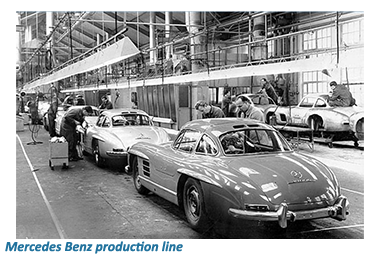 ging defeat that Germany suffered left the company in a very precarious state, with high unemployment causing the country’s already strained economy to reach the point of collapse.
With the demand for luxury automobiles reaching very close to rock bottom, Karl and Bertha Benz got together with Paul and Adolf Daimler to discuss the possibility of consolidation to ride out the economic downturn.
The first stage in this new arrangement got underway in 1924, with the two former rivals signing an agreement, where they would dare information relating to design and production, as well as centralising their advertising.
Daimler and Benz also took the logical step to consolidate their sales force, while marketing the brands individually.
ging defeat that Germany suffered left the company in a very precarious state, with high unemployment causing the country’s already strained economy to reach the point of collapse.
With the demand for luxury automobiles reaching very close to rock bottom, Karl and Bertha Benz got together with Paul and Adolf Daimler to discuss the possibility of consolidation to ride out the economic downturn.
The first stage in this new arrangement got underway in 1924, with the two former rivals signing an agreement, where they would dare information relating to design and production, as well as centralising their advertising.
Daimler and Benz also took the logical step to consolidate their sales force, while marketing the brands individually.
Within th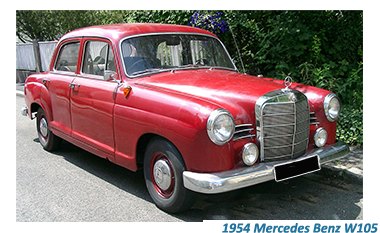 e space of a few months, it became apparent to the Daimlers and the Benzes that this new arrangement was going to be an outstanding success, with cost cut dramatically and sales increasing almost fourfold.
e space of a few months, it became apparent to the Daimlers and the Benzes that this new arrangement was going to be an outstanding success, with cost cut dramatically and sales increasing almost fourfold.
Very shortly the companies concluded that they had found a winning formula and there was no reason why they should not formally amalgamate.
In June of 1926, the World’s two oldest motor manufacturers became one, with the foundation of Daimler-Benz AG.
The first agreement that the two parties arrived at was that from then onwards all of the cars they produced would be marketed collectively under the Mercedes-Benz label.
From that point onwards, Mercedes-Benz, now entirely managed by the second generation Daimlers and Benzes abandoned their policy of producing luxury vehicles only, instead aiming for the mid-range section.
Their fir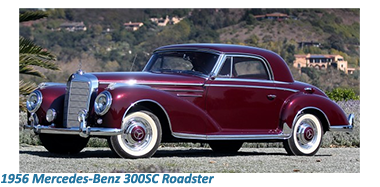 st major success came with the 130 series, Mercedes-Benz's first production car fitted with a rear-mounted 1.3 litre, four-cylinder engine capable of generating 23 bhp. Included in the 130 range was the W23, probably Mercedes Benz’s bestseller of the Thirties, available as a two-door saloon or cabriolet.
st major success came with the 130 series, Mercedes-Benz's first production car fitted with a rear-mounted 1.3 litre, four-cylinder engine capable of generating 23 bhp. Included in the 130 range was the W23, probably Mercedes Benz’s bestseller of the Thirties, available as a two-door saloon or cabriolet.
As the decade progressed and the grip of the National Socialist party grew tighter in Germany, Mercedes-Benz became progressively associated with their rise.
Nazi officers and officials, up to and including Adolf Hitler himself, would appear at major events and gatherings drivingor being driven in a Mercedes, a factor that caused a lot of damage to the company’s image, before and after the war.
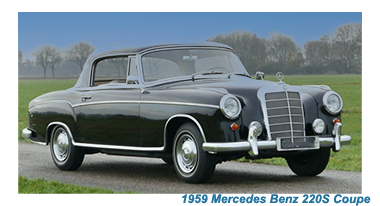 Ironically, in the immediate pre-war years, Mercedes-Benz produced some of their most excellent models.
Ironically, in the immediate pre-war years, Mercedes-Benz produced some of their most excellent models.
Cars, which under any other circumstances, would have been regarded as genuine classics.
Unfortunately, they will go down in history as symbols of the Third Reich when they were at their most virulent.
Among the best designs produced by Mercedes in that black period of history were the 170H, the 540K roadster, and the W138 limousine.
Despite suffering severe damage to their plants, Mercedes-Benz succeeded in getting back into production at the end of World War Two, releasing their first pre-war model as early as 1946.
West Germany made a dramatic economic recovery during the Fifties, with the most accurate barometer of the country's revival being the amount of new Mercedes on the cities and Autobahns of the country.
By that time the influence of the Daimler and Benz families on the running of the company was almost non- existent, with the principal shareholders local investors Friedrich Flick and the Quandt family.
Although there is no disputing that these remarkable pioneers had left their indelible stamp on the automobile industry.






